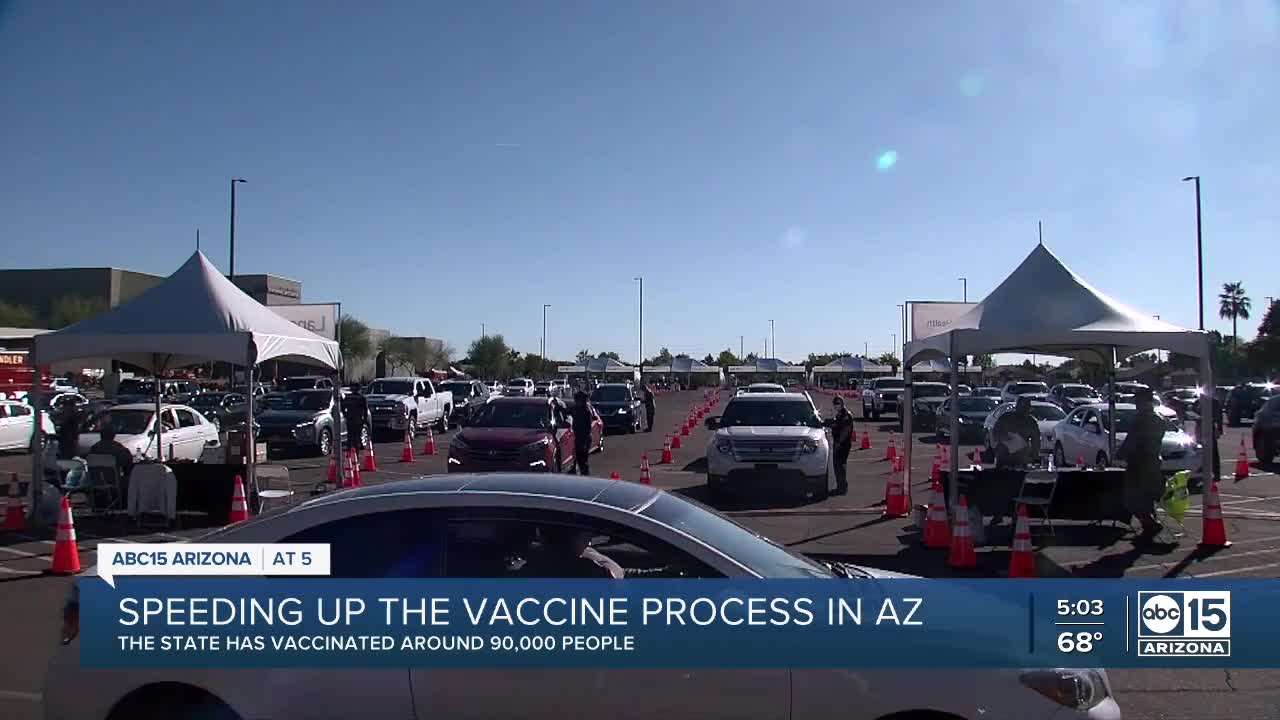PHOENIX — The state of Arizona has received 411,025 doses of the coronavirus vaccine, but that means only around 22% of the state's total supply on hand has found its way into the public so far, according to ADHS's vaccine dashboard.
“Some of the smaller states, in particular, they’ve really managed to use up a lot of their allocation, in some of the larger states, it’s been a little slower, the national average is around 35-36%,” said Dr. Hani Mahmassani, a professor and logistics expert at Northwestern University.
Arizona is clearly trailing that average, with only 90,880 vaccines distributed statewide. Last week, state health officials were making it a priority to see those numbers rise.
AZDHS has put out a report on vaccine administration in the state. This will hopefully be a regular occurrence. https://t.co/GMof7XS7Wk
— The AZ - abc15 - Data Guru (@Garrett_Archer) January 4, 2021
The state's largest county is distributing the vaccine through five locations or points of distribution (PODs).
“I don’t have to do too much math to tell you, it’s not enough,” said Mahmassani.
He says it’s critical for Maricopa County to expand the number of sites immediately. That means more providers and pharmacies getting in on the action of distribution.
State Health Director Cara Christ said last week, they're working to do exactly that.
Mahmassani says he also expects a bump in numbers following the holidays.
"I'm going to be watching the numbers very closely because it's going to be our first week where we don't have vacation and holiday impact," said Mahmassani.
“We are facing, as a country, the most ambitious vaccination campaign in our history,” said Dr. Howard Koh, Former US Assistant Secretary for Health under President Obama.
He says an efficient roll-out of the vaccine will take a unified effort from federal, state, county and local leaders.
This comes at a time when public health officials continue to juggle the high infection rates and hospital systems reaching their breaking points.
“To reach a time of normalcy by this summer or fall for the country, we need about one million doses administered a day, or more, and in the opening weeks we have fallen far short of that,” said Dr. Koh.
So short, the effort could begin bleeding into next year if plans aren’t modified.
“If the current pace doesn’t pick up, we could be at this a lot longer than 2021, and no one wants to see that,” said Dr. Koh.
“One of the propositions that’s recently come out is in order to get more people vaccinated more quickly, is to not focus on everybody getting their two doses right away,” said Dr. David Engelthaler, an epidemiologist with TGen.
He says, instead, an effort would be made to get everyone at least one shot, as studies show a single shot could offer nearly the same protection as two.
“Even a single dose from either one of these vaccines that are out now, probably gives us a greater efficacy rate than we were even anticipating with two doses,” said Engelthaler. "But none of that has been approved and right now you will still be scheduled to get both."
The question remains, can we pivot fast enough to save the lives that could soon be lost?




